Different geophysical data sets such as receiver functions, surface wave dispersion measurements, and first arrival travel times, provide complementary information about the Earth structure. To utilize all this information, it is desirable to perform a joint inversion, i.e., to use all these datasets when determining the Earth structure. In the ideal case, when we know the variance of each measurement, we can use the usual Least Squares approach to solve the joint inversion problem. In practice, we only have an approximate knowledge of these variances. As a result, if a geophysical feature appears in a solution corresponding to these approximate values of variances, there is no guarantee that this feature will still be visible if we use the actual (somewhat different) variances.
To make the joint inversion process more robust, it is therefore desirable to repeatedly solve the joint inversion problem with different possible combinations of variances. From the mathematical viewpoint, such solutions form a Pareto front of the corresponding multi-objective optimization problem.
1.
Introduction
In recent years, the researchers and modelers have shown a keen interest in the topic of fractional differential equations. In fact, such equations appear in the mathematical models of several real-world phenomena occurring in pure, applied and technical sciences, for instance, see the books [1,2,3]. Unlike the classical derivative, there do exist many definitions of fractional derivatives and integrals. In [4], Hilfer proposed an important definition of fractional derivative (known as Hilfer fractional derivative), which represents both Riemann-Liouville and Caputo fractional derivatives under suitable choice of parameters. Several authors studied initial value problems involving Hilfer fractional derivatives, for example, see [5,6,7,8,9]. Some interesting results on boundary value problems involving Hilfer fractional differential equations can be found in the literature. For example, we refer the reader to works on nonlocal Hilfer problems [10,11], Hilfer Langevin equations [12,13], Hilfer Katugampola operators [14], Hilfer Erdelyi-Kober operators [15], Hilfer inclusion problems [16], Hilfer stochastic differential equations [17], $ \psi $-Hilfer problems [18], $ \psi $-Hilfer coupled systems [19], delay Hilfer fractional differential equations [20], Hilfer equations with variable coefficients [21], Hilfer sequential fractional differential equations [22,23], Hilfer approximate controllability [24] and Hilfer-Hadamard boundary value problems [25]. A variety of recent results on boundary value problems and coupled systems of Hilfer fractional differential equations and inclusions can be found in the survey paper [26].
In [27], the authors introduced and developed the existence and uniqueness of solutions for a new class of coupled systems of Hilfer-type fractional differential equations with nonlocal integral boundary conditions of the form
where $ ^HD^{\alpha, \beta} $, $ ^HD^{\alpha_1, \beta_1} $ are the Hilfer fractional derivatives of orders $ \alpha $, $ \alpha_1 $, $ 1 < \alpha, \alpha_1 < 2 $, and parameters $ \beta $, $ \beta_1 $, $ 0\leq\beta, \beta_1\leq1 $, respectively, and $ I^{\varphi_i} $, $ I^{\psi_j} $ are the Riemann-Liouville fractional integrals of order $ \varphi_i > 0 $ and $ \psi_j > 0 $, respectively, the points $ \xi_i, z_j \in (a, b), a\geq 0, $ $ f, g: [a, b]\times {\mathbb R}\times {\mathbb R}\to {\mathbb R} $ are continuous functions and $ \theta_i $, $ \zeta_j\in \mathbb{R} $, $ i = 1, 2, \ldots, m $, $ j = 1, 2, \ldots, n $ are given real constants.
Recently, in [28], the authors studied a coupled system of $ \psi $-Hilfer fractional order Langevin equations with nonlocal integral boundary conditions given by
where $ {}^{H}\mathfrak{D}_{a^+}^{u, v; \psi } $ is $ \psi $-Hilfer fractional derivatives of order $ u \in \{\alpha_{1}, \alpha_{2}, p_{1}, p_{2}\} $ with $ 0 < u \leq 1 $ and $ v \in \{\beta_{1}, \beta_{2}, q_{1}, q_{2}\} $ with $ 0 \leq v \leq 1 $, $ \mathcal{I}_{a^+}^{w; \psi} $ is $ \psi $-Riemann-Liouville fractional integral of order $ w = \{\delta_{i}, \kappa_{j}\}, $ $ w > 0 $, the points $ \theta_i $, $ \xi_j \in (a, b) $, $ i = 1, 2, \ldots, m $, $ j = 1, 2, \ldots, n $, $ \lambda_{1} $, $ \lambda_{2} \in\mathbb{R} $, $ f $, $ g \in \mathcal{C}([a, b]\times \mathbb{R}^{2}, \mathbb{R}) $ and $ b > a \geq 0 $.
The objective of the present paper is to investigate the existence and uniqueness of solutions for a new class of coupled systems of Langevin type Hilfer fractional differential equations of different orders involving non-integral and autonomous type Riemann-Liouville mixed integral nonlinearities complemented with nonlocal coupled multi-point and Riemann-Liouville integral boundary conditions. This work is motivated by [27] and [28]. In precise terms, we consider the following problem:
where $ ^HD^{\alpha_j, \beta_j} $ represents Hilfer fractional derivative operator of order $ \alpha_j \in (0, 1) $ with parameter $ \beta_j \in [0, 1], $ $ j = 1, 2, 3, 4 $, $ \lambda_{1}, \lambda_{2}, \mu_{i}, \nu_{k}, \delta_{i} $ and $ \theta_{k}, i = 1, 2, ..., m, k = 1, 2, ..., n $ are constants, $ a < \eta_{i}, \xi_{k} < b, $ where $ a\geq 0 $ and $ m, n \in \mathbb{N}, $ $ I_{a^+}^{\zeta_1}, I_{a^+}^{q_{k}}, I_{a^+}^{p_{k}} $ denote the left Riemann-Liouville fractional integral operators of orders $ \zeta_1 > 0, q_{k} > 0, p_{k} > 0 $ respectively, while $ I^{\zeta_2}_{b^-} $ denotes the right Riemann-Liouville fractional integral operator of order $ \zeta_2 > 0, $ and $ f_{1}, f_{2}: [a, b]\times\mathbb{R}\times\mathbb{R}\rightarrow \mathbb{R}, $ $ g_{1}, g_{2}: \mathbb{R}\times\mathbb{R}\rightarrow \mathbb{R} $ are given continuous functions.
Note that problem (1.3) is more general than problem (1.2), since it contains non-integral as well as Riemann-Liouville mixed integral nonlinearities and nonlocal coupled multi-point and Riemann-Liouville integral boundary conditions.
The rest of the paper is organized as follows. In Section 2, we present some necessary material related to our study and prove an auxiliary lemma to define the solution for the problem at hand. Section 3 contains the main results which rely on Banach contraction mapping principle, Krasnosel'ski${\rm{\mathord{\buildrel{\lower3pt\hbox{$\scriptscriptstyle\smile$}} \over i} }}$'s fixed point theorem and Leray-Schauder alternative. In Section 4, we construct examples for the illustration of the results obtained in Section 3.
2.
Preliminaries
We begin this section with some basic concepts used in our study.
Definition 2.1. ([3]) The left and right Riemann–Liouville fractional integrals of order $ \omega > 0 $ for a continuous function $ g, $ existing almost everywhere on $ [a, b], $ are respectively defined by
For the sake of simplicity, we write $ I^{\omega}_{a+} $ and $ I^{\omega}_{b-} $ as $ I^{\omega}_{a} $ and $ I^{\omega}_{b} $ respectively.
Definition 2.2. ([4]) For $ n-1 < \alpha < n, \; 0\leq\beta\leq 1, $ the Hilfer fractional derivative of order $ \alpha $ and parameter $ \beta $ for a continuous function $ g $ is defined by
where
with $ \omega \in \{\beta(n-\alpha), (1-\beta)(n-\alpha)\}. $
Lemma 2.1. ([16]) Let $ h \in L(a, b), \; n-1 < \gamma_{1} \leq n, \; n \in \mathbb{N}, \; 0\leq \gamma_{2} \leq1 $ and $ I_a^{(n-\gamma_{1})(1-\gamma_{2})}h \in AC^{k}[a, b] $. Then
In the following lemma, we solve the linear variant of the problem (1.3).
Lemma 2.2. Let $ h_{1}, h_{2}:[a, b]\rightarrow \mathbb{R} $ be continuous functions and $ \Delta \ne 0. $ Then the unique solution of the following coupled system:
is given by
where $ \Delta, \Omega_{i}, \; i = 1, 2, 3, 4 $ are given by
and $ \epsilon_{i} = \alpha_{i}+\beta_{i}-\alpha_{i}\beta_{i}, \; i = 1, 2, 3, 4 $.
Proof. Applying the integral operators $ I_{a}^{\alpha_{1}} $ and $ I_{a}^{\alpha_{3}} $ on the first and second Hilfer fractional differential equations in (2.1) respectively and using Lemma 2.1, we obtain
Now operating $ I_{a}^{\alpha_{2}} $ and $ I_{a}^{\alpha_{4}} $ respectively to the Eqs (2.5) and (2.6), we get
Using the conditions $ x(a) = 0 $ and $ y(a) = 0 $ in (2.7) and (2.8) respectively, we find that $ c_{1} = d_{1} = 0. $ Thus we have
Inserting (2.9) and (2.10) in the condition $ x(b) = \sum\limits_{i = 1}^{m}\mu_{i}y(\eta_{i})+\sum\limits_{k = 1}^{n}\nu_{k}I_{a}^{q_{k}}y(\xi_{k}), $ we find that
which can alternatively be written as
In a similar manner, making use of (2.9) and (2.10) in the condition: $ y(b) = \sum_{i = 1}^{m}\delta_{i}x(\eta_{i})+\sum_{k = 1}^{n}\theta_{k}I_{a}^{p_{k}}x(\xi_{k}), $ leads to
Making use of the notation in (2.4), we can write (2.11) and (2.12) as
which, on solving for $ c_{0} $ and $ d_{0}, $ yields
Substituting the values of $ c_0 $ and $ d_0 $ in (2.9) and (2.10) respectively together with (2.4), we get the solution (2.2) and (2.3). By direct computation, one can obtain the converse of this lemma. The proof is finished.
3.
Existence and uniqueness results
Let $ \mathcal{X} = C([a, b], \mathbb{R}) $ denote the Banach space of all continuous functions from $ [a, b] $ to $ \mathbb{R} $ with the norm $ \|x\| = \sup_{t \in [a, b]}|x(t)|. $ Then the product space $ (\mathcal{X} \times \mathcal{X}, \|\cdot\|) $ is also a Banach space endowed with the norm $ \|(x, y)\| = \|x\|+\|y\| $ for $ (x, y) \in \mathcal{X} \times \mathcal{X} $.
In view of Lemma 2.2, we introduce an operator $ \mathcal{T}:\mathcal{X}\times \mathcal{X} \rightarrow \mathcal{X} \times \mathcal{X} $ as
where
and
For computational facilitation, we set
In the sequel, we suppose that $ f_{1}, f_{2} :[a, b]\times {\mathbb R}\times {\mathbb R}\to {\mathbb R} $ and $ g_{1}, g_{2}: \mathbb{R}\times\mathbb{R}\rightarrow \mathbb{R} $ are continuous functions satisfying the following assumptions:
$ (H_{1}) $ $ \forall (x_{1}, y_{1}), (x_{2}, y_{2}) \in \mathbb{R}^2, $ there exist positive real constants $ K_{i}, $ i = 1, 2, such that
$ (H_{2}) \; \forall (x_{1}, y_{1}), (x_{2}, y_{2}) \in \mathbb{R}^2, $ there exist positive real constants $ L_{i}, $ i = 1, 2, such that
$ (H_{3}) $ We can find real constants $ u_{k}, v_{k}, \omega_{k}, \tau_{k}\geqslant 0, k = 0, 1, 2 $ with $ u_{0}, v_{0}, \omega_{0}, \tau_{0}\neq 0 $ such that
$ (H_{4}) $ There exist nonnegative functions $ \phi _{1}, \phi _{2} \in C([a, b], {\mathbb R}^{+}), $ and positive constants $ \Lambda_{1}, \Lambda_{2} $ such that
$ |f_{1}(t, x, y)|\le \phi_{1}(t) $, $ |f_{2}(t, x, y)|\le \phi_{2}(t) $, $ |g_1(x, y)|\leqslant \Lambda_{1} $, $ |g_2(x, y)|\leqslant \Lambda_{2} $ for all $ (t, x, y)\in [a, b] \times {\mathbb R}\times {\mathbb R}. $
Now we present our first main result dealing with the uniqueness of solutions for the system (1.3), which relies on Banach contraction mapping principle [29].
Theorem 3.1. Assume that conditions ($ H_{1}) $ and $ (H_{2} $) hold. Then the system (1.3) has a unique solution on $ [a, b] $ provided that
where $ \sigma_1, \dots, \sigma_{10} $ are given in (3.3)–(3.12).
Proof. Let us fix $ \sup_{t\in[a, b]}|f_{i}(t, 0, 0)| = M_{i} < \infty, |g_{i}(0, 0)| = 0, \; i = 1, 2. $ In order to satisfy the hypotheses of Banach contraction mapping principle, we first show that $ \mathcal{T}B_{\rho}\subset B_{\rho}, $ where $ B_{\rho} $ is a closed bounded ball $ B_{\rho}\subset \mathcal{X} \times \mathcal{X} $ defined by
with
For an arbitrary element $ (x, y) \in B_{\rho} $ and for each $ t \in [a, b], $ we have
In a similar manner, one can find that
Adding the last two inequalities and using (3.14), we obtain
which shows that $ \mathcal{T}B_{\rho}\subset B_{\rho} $.
Next, we show that $ \mathcal{T} $ is a contraction on $ \mathcal{X}\times \mathcal{X}. $ For that, let $ (x, y), (x_1, y_1) \in \mathcal{X} \times \mathcal{X}. $ Then we have
which leads to
Similarly one can obtain
It follows from the last two inequalities that
Since $ (\sigma_{1}+\sigma_{3})K_{1}+(\sigma_{4}+\sigma_{2})K_{2}+(\sigma_{9}+\sigma_{7})L_{1}+(\sigma_{10}+\sigma_{8})L_{2} +\sigma_{5}+\sigma_{6} < 1 $ by (3.13), therefore $ \mathcal{T} $ is a contraction and hence by Banach's contraction mapping principle, the operator $ \mathcal{T} $ has a unique fixed point. In consequence, the problem (1.3) has a unique solution on $ [a, b]. $ The proof is completed.
The next existence result is based on Krasnosel'ski${\rm{\mathord{\buildrel{\lower3pt\hbox{$\scriptscriptstyle\smile$}} \over i} }}$'s fixed point theorem.
Lemma 3.1. (Krasnosel'ski${{\mathord{\buildrel{\lower3pt\hbox{$\scriptscriptstyle\smile$}} \over i} }}$'s fixed point theorem). [30] Let $ B $ be a closed, convex, bounded and nonempty subset of a Banach space $ X. $ Let $ E_1 $ and $ E_2 $ be the operators such that (i) $ E_1x+E_2y \in B $ whenever $ x, y \in B; $ (ii) $ E_1 $ is compact and continuous; (iii) $ E_2 $ is a contractionmapping. Then there exists $ z \in B $ such that $ z = E_1z+E_2z. $
Theorem 3.2. Assume that $ (H_1), $ $ (H_2) $ and $ (H_{4}) $ hold and
where $ \sigma_{5} $ and $ \sigma_{6} $ are given by (3.7) and (3.8) respectively. Then the problem (1.3) has at least one solution on $ [a, b]. $
Proof. Let us split the operators $ \mathcal{T}_{1} $ and $ \mathcal{T}_{2} $ defined by (3.1) and (3.2) respectively into four operators as follows
where
Now we verify the hypotheses of Krasnosel'ski${\rm{\mathord{\buildrel{\lower3pt\hbox{$\scriptscriptstyle\smile$}} \over i} }}$'s fixed point theorem (Lemma 3.1) in three steps.
(ⅰ) In this step, it will be shown that $ \mathcal{T}_{1}(x, y)+\mathcal{T}_{2}(\widehat{x}, \widehat{y}) \in B_{r} $ for all $ (x, y), (\widehat{x}, \widehat{y}) \in B_{r}, $ where $ B_{r}\subset \mathcal{X}\times \mathcal{X} $ is a bounded closed ball with radius
As in the proof of Theorem 3.1, we can find that
and
which lead to the inequality
Thus $ \mathcal{T}_{1}(x, y)+\mathcal{T}_{2}(\widehat{x}, \widehat{y}) \in B_{r} $.
(ⅱ) Here we establish that $ (\mathcal{T}_{1, 2}, \mathcal{T}_{2, 2}) $ is a contraction mapping. Let $ (x, y), (\widehat{x}, \widehat{y}) \in B_{r}. $ Then it is easy to find that
Consequently, we get
which, by (3.15), implies that $ (\mathcal{T}_{1, 2}, \mathcal{T}_{2, 2}) $ is a contraction.
(ⅲ) We show that $ (\mathcal{T}_{1, 1}, \mathcal{T}_{2, 1}) $ is compact and continuous.
Continuity of $ (\mathcal{T}_{1, 1}, \mathcal{T}_{2, 1}) $ is obvious. For $ (x, y) \in B_{r}, $ we have
In a similar manner, we can get $ |\mathcal{T}_{2, 1}(x, y)(t)| \leq \sigma_{3}\|\phi_{1}\|+\sigma_{4}\|\phi_{2}\|+ \sigma_{9}\Lambda_{1}+ \sigma_{10}\Lambda_{2}. $ Thus
which means that $ (\mathcal{T}_{1, 1}, \mathcal{T}_{2, 1}) $ is uniformly bounded on $ B_{r}. $
In order to show the equicontinuity of $ (\mathcal{T}_{1, 1}, \mathcal{T}_{2, 1}), $ we take $ t_{1}, t_{2} \in [a, b] $ with $ t_{1} < t_{2}. $ Then, for arbitrary $ (x, y) \in B_{r}, $ we obtain
as $ t_{2}\rightarrow t_{1} $ independently of $ (x, y) \in B_{r}. $ Also
as $ t_{2}\rightarrow t_{1} $ independently of $ (x, y) \in B_{r}. $ Thus $ |(\mathcal{T}_{1, 1}, \mathcal{T}_{2, 1})(x, y)(t_{2})-(\mathcal{T}_{1, 1}, \mathcal{T}_{2, 1})(x, y)(t_{1})| $ vanishes as $ t_{2}\rightarrow t_{1} $ independently of $ (x, y) \in B_{r}, $ which shows that $ (\mathcal{T}_{1, 1}, \mathcal{T}_{2, 1}) $ is equicontinuous. So we deduce by the Arzelá-Ascoli theorem that $ (\mathcal{T}_{1, 1}, \mathcal{T}_{2, 1}) $ is compact on $ B_{r}. $
It follows from the steps (i)-(iii) that the hypotheses of Krasnosel'ski${\rm{\mathord{\buildrel{\lower3pt\hbox{$\scriptscriptstyle\smile$}} \over i} }}$'s fixed point theorem are satisfied, so its conclusion implies that the problem (1.3) has at least one solution on $ [a, b]. $ This finishes the proof.
Remark 3.1. The conclusion of Theorem 3.2 can also be achieved by assuming $ (H_{1}), (H_{2}), (H_4) $ and the condition: $ (\sigma_{1}+\sigma_{3})K_{1}+(\sigma_{2}+\sigma_{4})K_{2}+(\sigma_{7}+\sigma_{9})L_{1}+(\sigma_{8}+\sigma_{10})L_{2} < 1, $ where $ \sigma_1, \dots, \sigma_4 $ are given in (3.3)–(3.6) and $ \sigma_7, \dots, \sigma_{10} $ are given in (3.9)–(3.12).
In the following result, we prove the existence of solutions for the problem (1.3) by applying the Leray-Schauder alternative [29].
Lemma 3.2. (Leray-Schauder alternative [29]) Let $ E $ be a Banach space, $ M $ be closed, convex subset of $ E $, $ U $ is an open subset of $ C $ and $ 0 \in U. $ Suppose that $ F:\overline{U}\to C $ is continuous, compact map (that is, $ F(U) $ is a relatively compact subset of $ C $). Then either (i) $ F $ has a fixed point in $ \overline{U} $, or (ii) there are $ u \in \partial U, $ and $ \lambda \in (0, 1) $ with $ u = \lambda F(U) $.
Theorem 3.3. Assume that ($ H_{3}) $ holds. Then there exists at least one solution for the problem (1.3) on $ [a, b] $ provided that
where $ \sigma_1, \dots, \sigma_{10} $ are given in (3.3)–(3.12).
Proof. For all $ (x, y) \in B_{\rho}\subset \mathcal{X} \times \mathcal{X}, $ where $ B_{\rho} $ defined by (3.14), there exist positive constants $ N_{1}, \dots, N_4 $ such that $ |f_{1}(t, x, y)|\leq N_{1}, |f_{2}(t, x, y)|\leq N_{2}, |g_{1}(x, y)|\leq N_{3}, |g_{2}(x, y)|\leq N_{4}, $ Then we show that $ \mathcal{T}: \mathcal{X} \times \mathcal{X} \rightarrow \mathcal{X} \times \mathcal{X} $ is completely continuous. Observe that continuity of $ f_{1}, f_{2}, g_{1}, g_2 $ implies that of the operator $ \mathcal{T}. $ For $ (x, y) \in B_{\rho} $, as in the proof of Theorem 3.1, we have
From the preceding inequalities, we get
which implies that $ \mathcal{T}B_{\rho} $ is uniformly bounded.
Next we show that $ \mathcal{T}B_{\rho} $ is equicontinues. Let $ t_{1}, t_{2} \in [a, b] $ with $ t_{2} > t_{1}. $ Then, for arbitrary $ (x, y) \in B_{\rho}, $ we obtain
which tends to zero as $ t_{1}\rightarrow t_{2} $ independent of $ (x, y) \in B_{\rho}. $ Similarly, it can be established that $ | \mathcal{T}_{2}(x, y)(t_{2})-\mathcal{T}_{2}(x, y)(t_{1})|\rightarrow 0 $ as $ t_{2}\rightarrow t_{1} $ independently of $ (x, y) \in B_{\rho}. $ Thus the operator $ \mathcal{T} $ is equicontinuous. Hence, by the Arzelá-Ascoli theorem, the operator $ \mathcal{T} $ is completely continuous.
Next we consider the set
and show that it is bounded. Let $ (x, y) \in \Omega $, then $ (x, y) = r \mathcal{T}(x, y) $ implies that $ x(t) = r \mathcal{T}_{1}(x, y)(t), $ and $ y(t) = r \mathcal{T}_{2}(x, y)(t), \forall t \in [a, b]. $ By the condition ($ H_{3} $), we obtain
Adding the above inequalities, we get
which leads to
where
by condition (3.16). Thus the set $ \Omega $ is bounded. Hence it follows by the Leray-Schauder alternative for single-valued maps [29] that the problem (1.3) has at least one solution on $ [a, b], $ which completes the proof.
4.
Examples
Consider a coupled system of Hilfer fractional differential equations with boundary conditions:
Here $ \alpha_{1} = 1/2, \alpha_{2} = 1/6, \alpha_{3} = 1/2, \alpha_{4} = 1/2,$ $ \beta_{1} = 3/4, \beta_{2} = 4/5, \beta_{3} = 3/4, \beta_{4} = 1/7, \lambda_{1} = 1/90, \lambda_{2} = 1/100,$ $\epsilon_{1} = 7/8 = \epsilon_{3}, q_{k} = 1/2, p_{k} = 1/3,$ $k = 1, 2, 3, m = 5, n = 3, \eta_{1} = 1/10, \eta_{2} = 1/5, \eta_{3} = 3/10,$ $\eta_{4} = 2/5, \eta_{5} = 1/2, \xi_{1} = 3/5, \xi_{2} = 7/10, \xi_{3} = 4/5,$ $\mu_{1} = 1/100, \mu_{2} = 1/200,$ $\mu_{3} = 1/300, \mu_{4} = 1/400, \mu_{5} = 1/500,$ $ \nu_{1} = 1/90, \nu_{2} = 1/70, \nu_{3} = 1/20,$ $\delta_{1} = 1/35, \delta_{2} = 1/100, \delta_{3} = 1/21, \delta_{4} = 1/70, \delta_{5} = 1/500, \theta_{1} = 1/100,$ $ \theta_{2} = 1/200, \theta_{3} = 1/300, \zeta_{1} = 1/2, \zeta_{2} = 1/3 $.
With the given data, it is found that $ |\Delta| = 1.1419, \sigma_{1} = 2.2278, \sigma_{3} = 0.1836, \sigma_{2} = 0.1096,$ $\sigma_{4} = 2.0132, \sigma_{5} = 0.0009, \sigma_{6} = 0.0025, \sigma_{7} = 1.8560, \sigma_{8} = 0.0475, \sigma_{9} = 0.1328,$ $\sigma_{10} = 1.1252. $
$ ({\bf a)} $ For illustrating Theorem 3.1, we take
It can easily be verified that $ f_{1}, f_{2} $ satisfy the condition $ (H_1) $ with $ K_{1} = 1/7\pi, K_{2} = 1/7, $ respectively and $ g_{1}, g_{2} $ satisfy the condition $ (H_2) $ with $ L_{1} = 1/12, L_{2} = 1/17, $ respectively. Furthermore
Clearly the hypotheses of Theorem 3.1 are satisfied and hence it follows by its conclusion that the system (4.1) with $ f_{1}(t, x, y), f_{2}(t, x, y), g_{1}(x, y) $ and $ g_{2}(x, y) $ given by (4.2) has a unique solution on $ [0, 1]. $ On the other hand, one can deduce that the system (4.1) with (4.2) has at least one solution on $ [0, 1] $ by the application of Remark 3.1 with $ (\sigma_{1}+\sigma_{3})K_{1}+(\sigma_{4}+\sigma_{2})K_{2}+(\sigma_{9}+\sigma_{7})L_{1}+(\sigma_{10}+\sigma_{8})L_{2}\approx 0.6476 < 1. $
$ ({\bf b)} $ As an application of Theorem 3.2, consider
Using the given values, we find that the assumption ($ H_{4} $) is satisfied since $ |f_{1}(t, x, y)| $ $ \leqslant \dfrac{\pi}{20(1+t^2)}+\dfrac{1}{17(t+1)} = \phi_{1}(t) $ and $ |f_{2}(t, x, y)|\leqslant \dfrac{2}{\sqrt{t^{2}+2}} + \dfrac{2}{5\pi(8+t)} = \phi_{2}(t), $ $ |g_{1}(x, y)|\leqslant (6+\pi)/12 = \Lambda_{1}, $ $ |g_{2}(x, y)|\leqslant 10/21 = \Lambda_{2}. $ Also $ (\sigma_{5}+\sigma_{6})\approx 0.0034 < 1 $ holds true. As all the assumptions of Theorem 3.2 are satisfied, so its conclusion implies that the system (4.1) with the nonlinearities (4.3) has at least one solution on $ [0, 1]. $
$ ({\bf c)} $ In order to demonstrate the application of Theorem 3.3, let us choose
Obviously ($ H_{3} $) holds true with positive values of $ u_{0}, v_{0}, \omega_{0}, \tau_{0} $ and $ u_{1} = 1/17, u_{2} = 1/26, v_1 = 1/8, v_2 = 1/5, \omega_{1} = 1/21, \omega_{2} = 1/13, \tau_{1} = 1/7, \tau_{2} = \pi/22. $ Also, $ (\sigma_{1}+\sigma_{3})u_{1}+(\sigma_{2}+\sigma_{4})v_{1}+(\sigma_{7}+\sigma_{9})\omega_{1}+(\sigma_{8}+\sigma_{10})\tau_{1}+(\sigma_{5}+\sigma_{6})\approx 0.6728 < 1, $ and $ (\sigma_{1}+\sigma_{3})u_{2}+(\sigma_{2}+\sigma_{4})v_{2}+(\sigma_{7}+\sigma_{9})\omega_{2}+(\sigma_{8}+\sigma_{10})\tau_{2}+(\sigma_{5}+\sigma_{6})\approx 0.8412 < 1. $ As the hypothesis of Theorem 3.3 is verified, therefore we deduce by its conclusion that there exists at least one solution of the system (4.1) with $ f_{1}, f_{2}, g_{1} $ and $ g_2 $ given by (4.4).
5.
Conclusions
In the present research work, we investigated the existence and uniqueness of solutions for a new coupled system of multi-term Hilfer fractional differential equations of different orders involving non-integral and autonomous type Riemann-Liouville mixed integral nonlinearities equipped with nonlocal coupled multi-point and Riemann-Liouville integral boundary conditions. Firstly, we proved an auxiliary result concerning the linear variant of the given problem, helping us to transform the problem at hand into a fixed point problem. Then we proved the existence of a unique solution for the given problem by applying Banach's contraction mapping principle and derived the existence results by means of Krasnosel'ski${\rm{\mathord{\buildrel{\lower3pt\hbox{$\scriptscriptstyle\smile$}} \over i} }}$'s fixed point theorem and Leray-Schauder nonlinear alternative. All the obtained results are well illustrated by numerical examples. Our results are new and enrich the literature on nonloacl nonlinear integral boundary value problems for Hilfer fractional differential equations.
Acknowledgments
This project was funded by the Deanship of Scientific Research (DSR), King Abdulaziz University, Jeddah, Saudi Arabia under grant no. (KEP-PHD-80-130-42). The authors, therefore, acknowledge with thanks DSR technical and financial support.
Conflict of interest
The authors declare no conflict of interest.











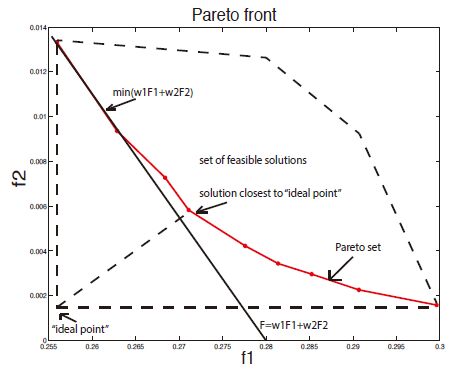
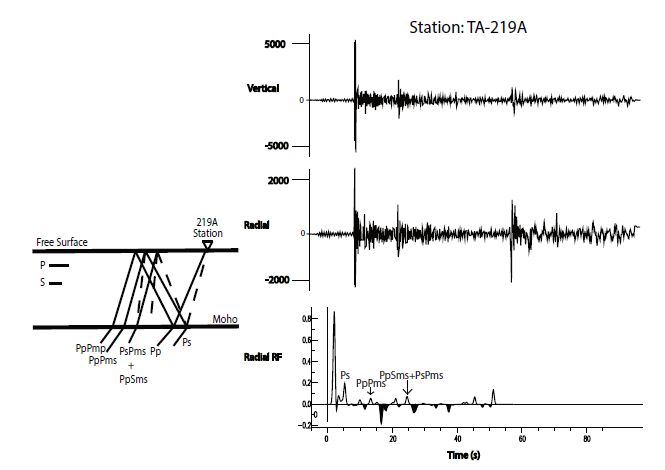
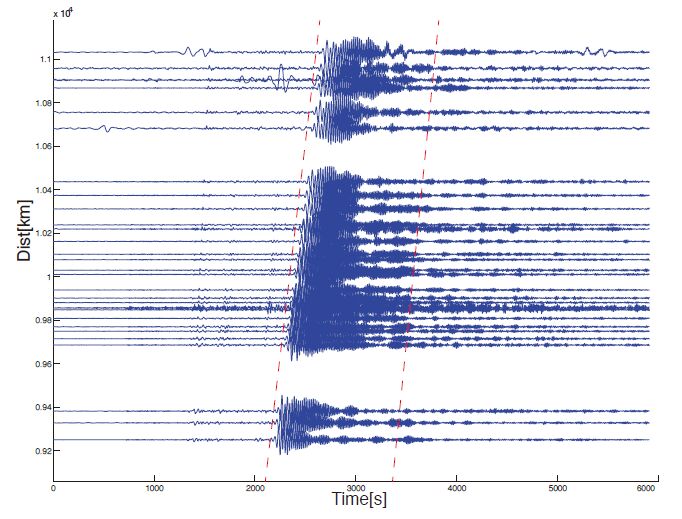
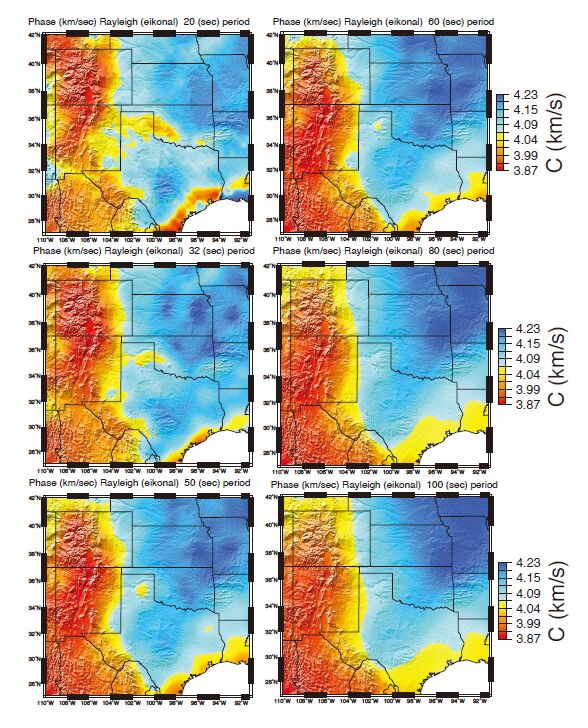

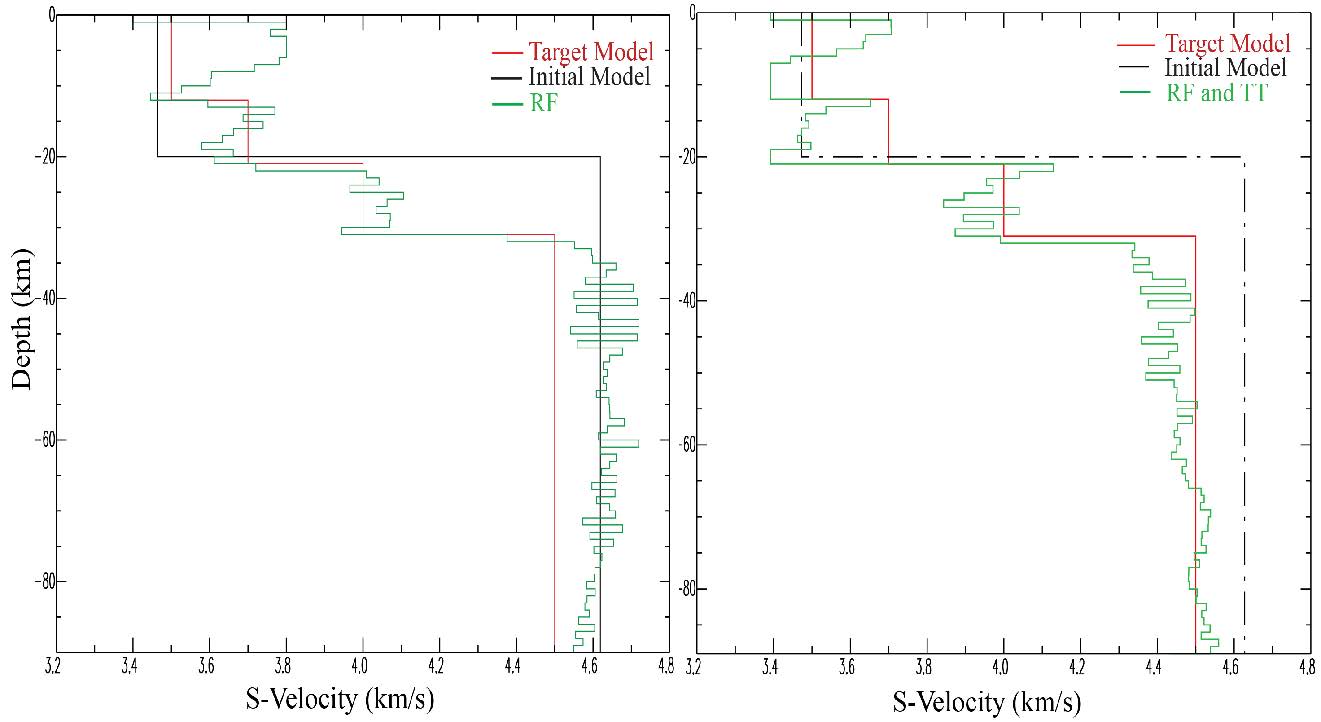
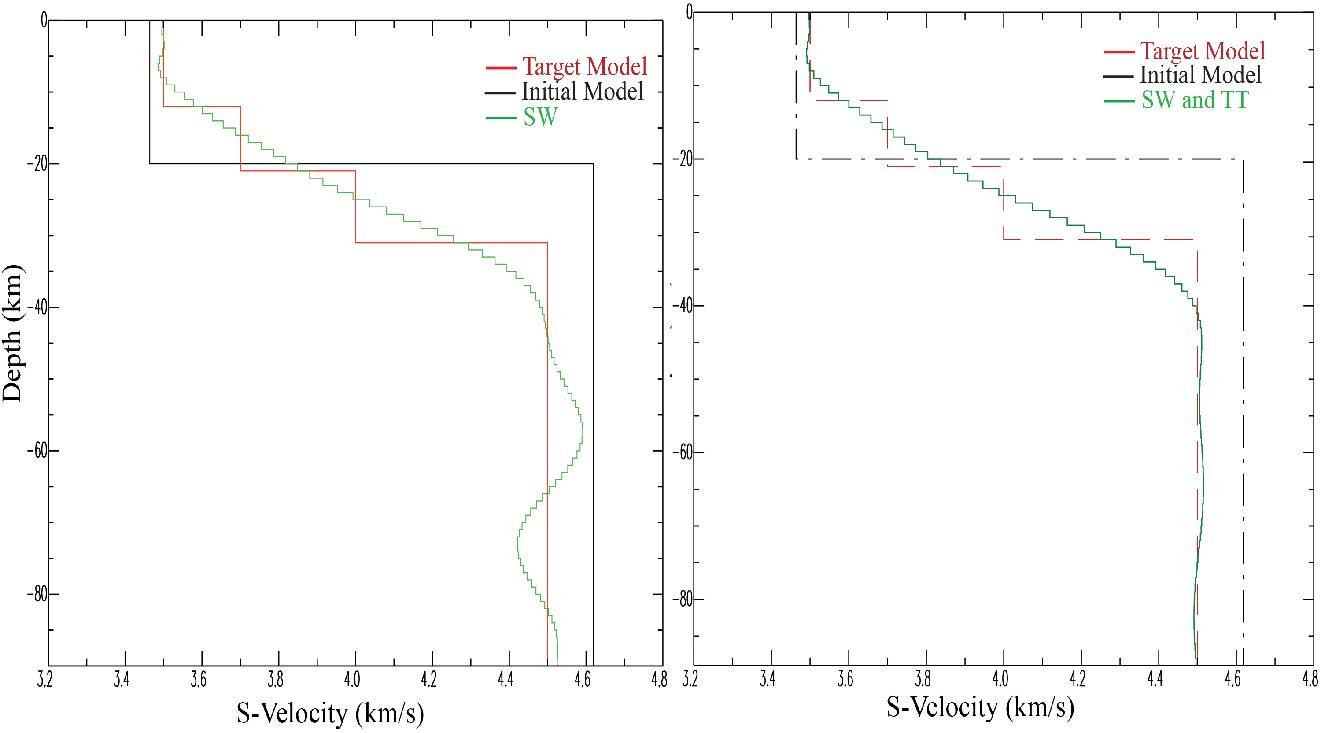

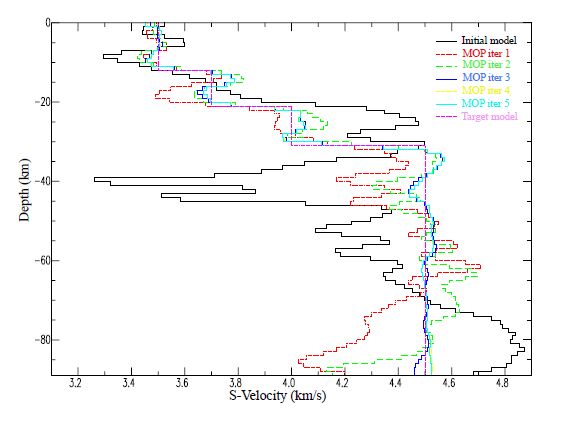
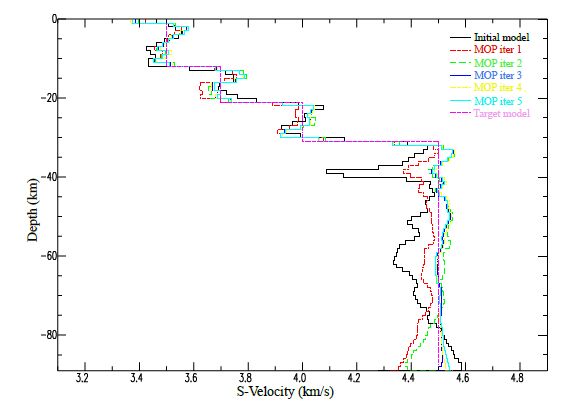
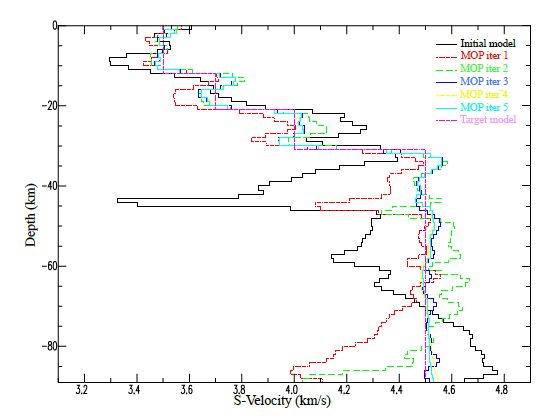
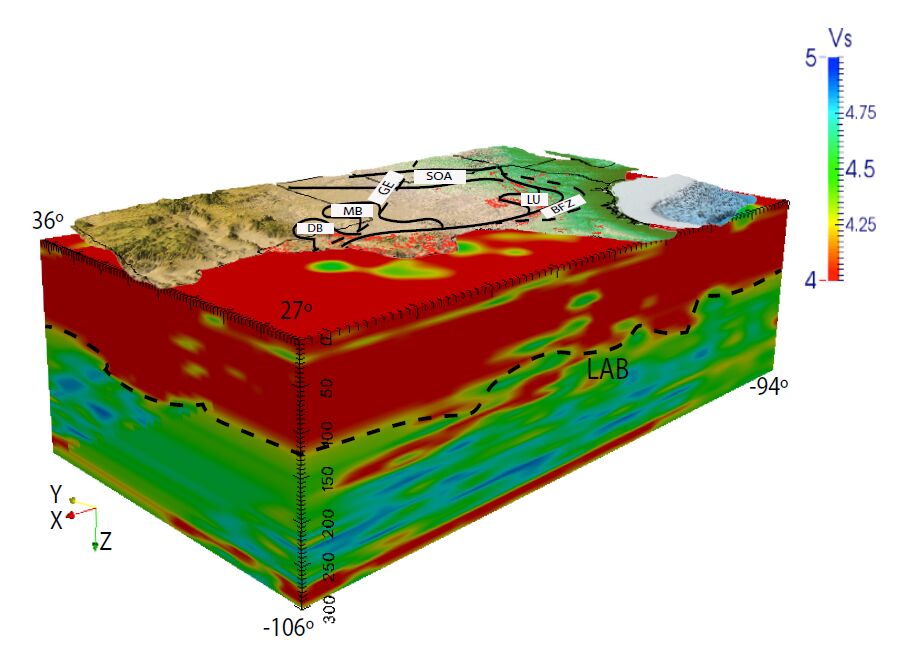


 DownLoad:
DownLoad: